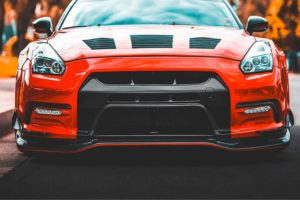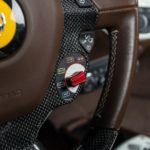Quick Navigation
People are becoming increasingly interested in attractive cars. As a result, the business of modifying cars has expanded globally.
However, no matter what the manufacturer uses to decorate a car, you still want something more.
This has made many people install fascia on their cars. But the majority do not know some vital things about fascia in a car.

That is why we have taken time to research fascia on a car. In this article, you will learn all you need to know about fascia on a car, from the advantages to demerits to how to install it.
So, we are going on a long drive. Get ready to learn what this post has in stock for you!
What Is Fascia on Car
The term “fascia” is used in two different contexts in the car industry. The term fascia is frequently used to describe decorative panels or the entire dashboard of a car.
Fascia typically comprises soft materials such as high-density plastic, fiberglass, or even faux or real leather.
Fascia serves mostly aesthetic purposes but also has aerodynamic features that aid in fuel economy.
When low-speed collisions happen, they often damage the fascia but not the bumper.
Moreso, regulations governing bumper design in the late 1970s resulted in more soft plastic being used on the front and rear of cars.
The name “fascia” was originally used to describe these soft sections. But it is now more commonly used to refer to the grille, headlights, front bumper, and other aspects of a car’s front end.
A bumper valance panel, which sits on top of or directly behind the bumper, is also part of the car’s fascia.
The Advantages of Fascia on Car
The merit of fascia on a car goes beyond giving your car an attractive look.
The fascia on the car helps to hide the components, increase vehicle aerodynamics, and offer an aesthetically pleasing look. Also, the fascia protects the car and the passenger in it.
Fascia helps the car to absorb the force of a high-impact crash and prevents the car from bending in a low-impact crash.
The Demerit of Fascia on Car
When you install fascia on your car, more repairs and replacements are required, which makes it costly to maintain.
When a car accident occurs, it causes extensive damage to the vehicle and requires a significant amount of money to repair.
And when there are cracks in the fascia, you must replace them. The fascia of a car is generally comprised of plastic, making it expensive to replace.
For example, the cost of replacing a car’s fascia might range from USD 50 to USD 500. As a result, replacing this part of a car may increase the running expenses of the car.
Today’s cars are safer and lighter and achieve greater gas mileage. However, body repairs are more expensive now because of how cars are built.
When Should You Get a Fascia on Your Car
It’s usually up to you to decide whether you need a new look for your car. However, if you still need more reason, consider the following reasons why you might need a fascia:
- The paint chipped – No matter how durable your car’s paint is, it might deteriorate over time. When this occurs, the paint either dries out due to the heat or develops air bubbles due to the humidity. If you notice this on your car, it may be time to install a fascia.
- The old fascia is deteriorating – When you notice the beauty of your car is deteriorating, you need to install a fascia if you do not want to repaint it.
- Your car or the old fascia has a lot of dents – Dents are not usually indicative of damage, although they can be ugly. If you’re tired of staring at the dents on your car, this is reason enough to get that gleaming new fascia.

How to Install a Fascia on a Car
Step 1: Remove the Original Front Bumper Cover
It is essential that you remove the front bumper cover before installing the new front.
Step 2: Transfer the Original Lamps, Louvers, and Grille
The motorized louvers (vents) are attached to the OEM front bumper cover and must be removed to install the new Fascia.
Remove the two screws that hold the louvers to the bumper cover and the one screw that holds them to the OEM front splitter.
The mounting bosses (F4-ORANGE) are left without holes to accommodate minor variances between factory parts. Drilling holes will be required when transferring OEM parts to the new Fascia.
Before you drill, position the OEM pieces on the new Fascia and mark the locations of the holes.
Once the optimal location has been determined, drill the necessary holes (F4-RED) in the mounting bosses with a 1/8″ (3.50mm) drill bit.
The OEM grille is held in place by two screws on either side of the bumper cover opening. Use the same two screws to secure the grille to the new Fascia.
NOTE: Refer to FIGURE 5 for the proper placement of the above. Make sure the parking sensor is in place before installing the sensor holders.
The predrilled holes include a small step that is used to locate the hole and sensor along with the parking sensor.
Step 3: Move the External Temperature Sensor
People in warmer climates should reposition the OEM external temperature sensor to receive the same values as the OEM bumper cover.
Simply unclip the sensor from the top of the grille to accomplish this. With a razor blade, cut a small “X” at the top of the lower air duct (F10) and insert the sensor into the hole (F10-ORANGE).
Note: Before installing the new Fascia, the Emergency Hood Release must be installed.
Step 4: Install the Emergency Hood Release
NOTE: Depending on when the car was built, there were two somewhat different ways to access the Model S’s front car. Refer to your owner’s manual for this.
There is only one electronic latch on some older vehicles, but there is also a manual release (F11-GREEN).
While Model S cars were manufactured after November/December 2015, the mechanism was upgraded to a fully electronic configuration with two motorized release buttons (F12).
For older-style hood release systems, the new Front Fascia will include a single Emergency Hood Release that does not need to be plugged in.
An electronic hood release will include a dual-style Unplugged Emergency Hood release mechanism for modern cars.
The inner trunk trim panels must be removed before installation on any vehicle.
Step 5: Completion
Finally, replace the factory panels to complete the job. To ensure everything works, close the hood and pull the loop to open the latch.
After testing, remember to hide the loop behind the bottom of the fender liner.
Wrapping Up
If you plan to install fascia on your car, you should read this post first. This post discussed all you need to know about fascia on a car.
This post discussed the benefits, risks involved, and best installation time.
Not to leave any information out, we also discussed how you can install it. There is a lot of information packaged for you in this post.
And you need to read every detail before you install a fascia on your car. Also, this article is for you if you need an idea of what fascia on a car is!

Patrick started his love affair with cars in his childhood. Over the years, he claims a sturdy hold on his driving skills, along with a thorough understanding of cars. We can expect some interesting, holistic, and pleasurable blogs with his flair for writing and his love for cars.
Being a car enthusiast, Patrick has experience comprising of two decades in which he has ridden some of the meanest and strongest machines in the automotive industry. His previous avatars include an automotive professional, photographer, and journalist, and you will certainly experience the roundness of experience in his piece on this site.
In his second decade of reviewing cars and analyzing tools, Patrick is all set to give you convincing, reliable, and the latest information regarding what’s happening in the automotive industry. Currently, he owns a BMW Z3 but cannot get his eyes off Aston Martin DB5. He is a car enthusiast; he loves cooking and listening to music, especially jazz. Here are some of the pieces written by our ace author.







